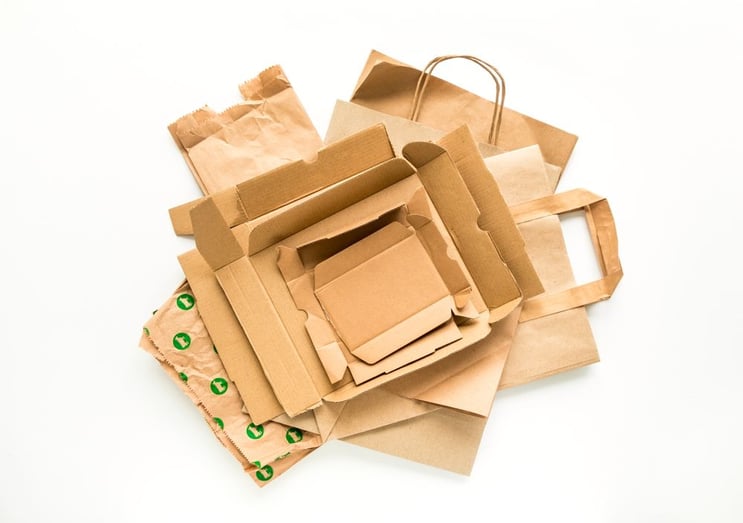
5 Ways to Improve the Environmental Quality of Your Packaging
|
Sustainability
|
Packaging
Posted By:
Charlotte Le Coz
Step 1: Reduce packaging size
This may seem like a no-brainer, but inappropriately sized packaging is still prevalent today. In addition to the negative environmental impact, unnecessary packaging adds cost up and down the supply chain through higher material expenses, lost space, and the addition of superfluous weight. Oversized packaging also requires additional padding that could potentially damage the product.
By taking the time to review your product package designs and redesigning certain packaging as-needed toward an optimized size, you’ll be taking a big step toward your goal of sustainable packaging. And while this may require some cost incursion in the short term, you should find those costs quickly offset by savings on materials and transport.
Step 2: Use plant-based inks
Natural inks are of growing interest to consumers. For far too long, inks produced from petroleum derivatives have been the common standard for both food and non-food products, despite such chemicals containing substances known to be harmful to the environment, and potentially to human health.
Now, however, there is an abundance of plant-based ink products available, which are both safe for the environment and are derived from renewable resources. Transitioning to plant-based inks is easier than ever, as the price of these inks is now competitive with that of conventional petroleum-based inks.
Step 3: Increase the proportion of renewable materials used
When considering how to make your packaging more ecologically friendly, it is essential to review all package components and determine to what extent non-renewable materials can be replaced with renewable ones. A good eco-packaging plan should entail more than just primary packaging but also take into account the lifecycle of secondary packaging items–such as padding, paper, foam, cellophane, and tape.
One clear objective of eco-packaging is to use recycled and recyclable materials which can be continually drawn back into the manufacturing stream, and to abstain from single-use materials as much as possible. Today, there are a variety of options that can help you increase the share of renewable material in your packaging, such as recycled cardboard, paper tape, or fillings made from cornstarch.
Step 4: Promote the use of reusable package elements
However, entrenched the habit may be, it is essential to move away from the use of single-use packaging. Moving toward recycled and recyclable materials is one way, but the incorporation of reusable packaging elements is another. Reusable packaging may require additional logistical planning since all or part of the packaging must be returned once goods are emptied–but it also brings cost reduction opportunities.
Reusable packaging is often seen in the form of reusable crates used for transporting goods, but some companies are coming up with other novel implementations. For example, a number of companies have begun to use jute bags and fabric canvases to package their products. These fabrics can be reused for the manufacture of other small, personalized packaging, such as jewelry or glasses cases.
In the circular model of reusable packaging, material costs can be greatly diminished as new packaging isn’t required at nearly the same rate. If new to the concept of reusable packaging, perhaps the greatest challenge is a certain paradigm shift in how packaging is thought about but doing so can reap great ecological and cost benefits.
Step 5: Communicating your values to consumers
While switching to eco-packaging may (but not always) involve additional short-term costs, one must not forget what great benefit it is to your brand and products’ reputation and value as perceived by consumers. Consumers desire sustainable products and packaging, so it’s important to communicate your company’s commitment and approach to sustainability, and the positive impact that their purchase will have on their own well-being, as well as the environment at large.
Your consumers want to know about the efforts undertaken and the processes implemented to improve the environmental quality of your packaging. Be sure to communicate your story and values on your website, your social networks, and when possible, directly on the packaging of your products.
As the old adage goes, “Perfect is the enemy of the good,” and it is important to remember that when it comes to eco-packaging, simply initiating change and adopting a step-by-step plan toward sustainable practices is a win for the environment. With a pragmatic approach toward implementation, it is entirely possible to meet both the growing environmental challenges of our day and the growing expectations of consumers.